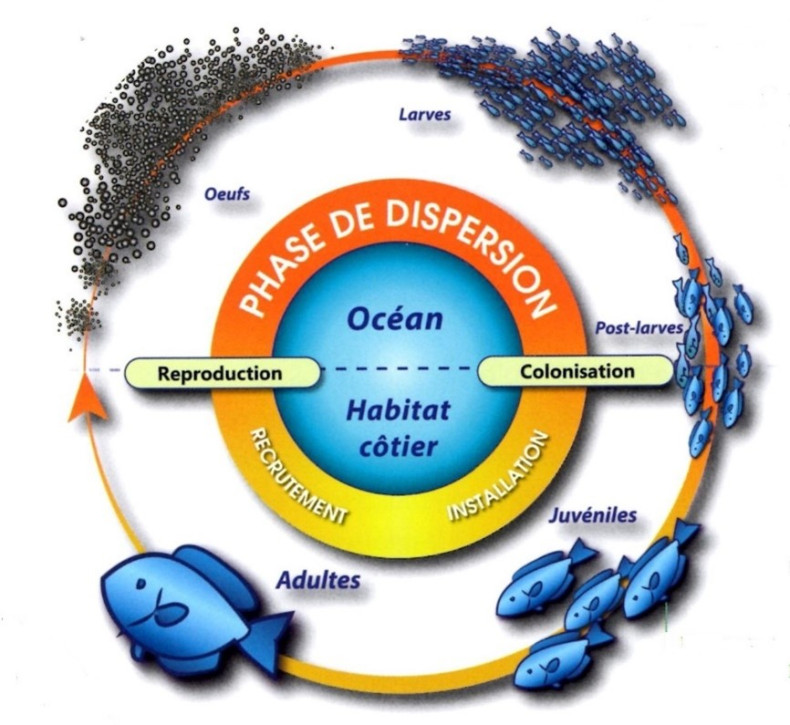Monitoring populations of juvenile fish
Marine Protected Areas (MPAs) are essential tools for the management and conservation of marine life. The benefits of MPAs for marine life are multiple and include an increase in fish biomass as well as an increase in the production of juveniles in the MPA but also in the areas surrounding it thanks to larval export.
Many coastal marine fish release their gametes directly into open water where fertilization takes place. The fertilized eggs are then transported by currents and the larvae that hatch are pelagic. After an initial part of development offshore, during which the larvae are transported by sea currents, they transform and actively swim towards coastal sites favorable to settlement. They are then called juveniles which will settle and develop in coastal nurseries until they reach the size allowing them to integrate into adult populations.
Settling into nurseries is therefore one of the most crucial phases in the life of coastal fish and plays a vital role in structuring adult populations. It is important to identify habitats that can play a nursery role as well as the species they shelter in order to adopt the best possible conservation strategies. This dynamic is particularly important in the context of MPAs because if the success of juvenile settlement is strong, the fish population will grow as well as the benefits of the MPA. Conversely, if nursery areas are abandoned, juveniles will encounter difficulties in developing and integrating into the MPA, so the benefits of protection will be less evident.

Life cycle of coastal fish (according to Lenfant et al., 2015).
This monitoring has been carried out since 2023 by Dr. Eugenio DI FRANCO, Project officer at AMPN. The objective is to identify habitats that can play the role of nurseries, as well as the juveniles who find refuge there, within Monaco's MPAs. This monitoring is also carried out in control, unprotected sites, in order to evaluate the effectiveness of the management measures put in place.
Dr. Eugenio DI FRANCO, Project officer at AMPN, carrying out the population monitoring of fish juveniles.
The inventory carried out in 2023 showed that many habitats favorable to the establishment of juveniles are present in the MPA of Monaco and in particular in Larvotto. A large number of juveniles were identified in the sites studied with the presence, among others, of seabreams, salemas, wrasses, seabasses, etc.
